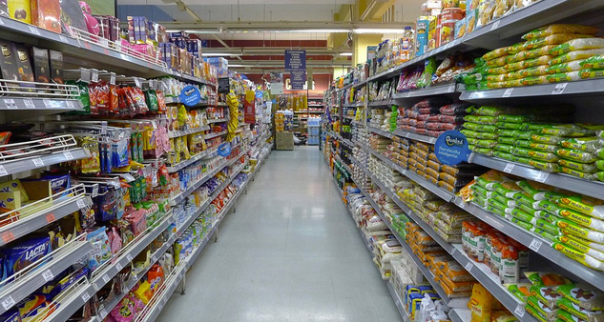Blog Archives
Latin Lessons in Retail – Africa Take Note
Posted by Matthew Campaigne Scott
 With the death of Hugo Chavez dominating news a while back many commentators continue speculating on the future of Venezuela’s property and retail markets, Will the current Latin Socialism continue? But despite the spread of so called Latin Socialism, Latin America is experiencing free market forces not unlike those influencing much of Africa. Have emerging markets of Africa and Latin America anything in common when it comes to the development of retail space for their growing middle classes.
With the death of Hugo Chavez dominating news a while back many commentators continue speculating on the future of Venezuela’s property and retail markets, Will the current Latin Socialism continue? But despite the spread of so called Latin Socialism, Latin America is experiencing free market forces not unlike those influencing much of Africa. Have emerging markets of Africa and Latin America anything in common when it comes to the development of retail space for their growing middle classes.
Africa in general and South Africa in particular has much in common with Latin America’s labour force. Although Asia’s, for example, current competitiveness relies considerably on its working-age population, Latin America and Africa’s outlook for labour force growth is much stronger, as young inhabitants set to join the labour force make up a higher percentage of those continents’ populations.
Like Africa, Latin American consumer demand is rapidly growing and the expanding middle class currently represents about 60% of the total population and approximately 40% of total purchasing power. With demand for newer retail infrastructure increasing, opportunities exist for developers and retailers who seek to expand their consumer base.
However, people are asking questions about whether the emerging African middle class is as big as the experts believe. Rapid urbanisation rates are pushing up potential consumer numbers but not necessarily incomes. These factors, among many others, are inhibiting the intention of developers and retailers to build critical mass quickly in African markets. It may still be a while before their high expectations manifest in the real world.
In Latin America however, development is increasing shopping centre space. In most of the region’s countries, traditional high street retail has gradually deteriorated as retail markets mature, with retailers migrating toward shopping centres. This has for some time been considered one of the drawbacks of the shopping centre invasion. Small businesses are seen to suffer and local decay of commercial real estate creeps in. This seems to be universal, with stark examples in both Africa and Latin America.
Latin American supermarkets have already seen notsable expansion and, among retailer types, they are expected to expand the most quickly—with new developments anchored by Wal-Mart, Carrefour and strong local players such as Commercial Mexicana (Mexico) , Pao de Acucar (Brazil) and Jumbo (Chile & Argentina).
By way of comparison, international brands such as Nike and McDonalds and KFC do currently have a presence in shopping centres in Africa. But an international study of retailers by South African property management company Broll, indicates very few players are prepared to commit. Out of over three hundred companies surveyed, scant few were considering African markets at all. There is evidence of interest in SA and North African countries but little attention has been paid to markets that South African companies are eyeing like Kenya, Nigeria and Mozambique and Zambia.[Broll]
Enter the Power Centre. A power centre is an unenclosed shopping centre with 23,000 m2 to 70,000 m2 of gross leasable area that usually contains three or more big names retailers and various smaller retailers, usually located in strip malls, with a common parking area shared among the retailers. [Wiki]Power Centres seem to have less of an appeal in Africa in that big retailers get behind the big conventional mall developments or not at all. Also the Power Mall presupposes a culture of one-shopper-one-car. Not a common African phenomena. In Latin American markets, Power centres have increased their footprints, with larger areas leased to specialized retailers. Power centres are also beginning to play a more important role in second-tier cities, targeted at lower income groups.
Changes in local government policies in Latin America as well as attractive yields and moderate risk have encouraged major international developers to focus more on commercial development in the region, and local investors to expand their operations to neighbouring countries. Companies such as BR Properties, Westfield and Brookfield began to invest extensively in retail property development nearly four years ago, and they have grown their retail asset portfolios across the region.
Alas in Africa problem-free land title is one of the challenges. Litigation from multiple claimants remains an ever-present threat. Disproportionately high costs of land and obtainability of large parcels of it in choked-up urban areas is a huge challenge. Similarly, Africa is challenged by the limited availability of long-term debt and a relatively low level of interest by international institutions in African property funds. Electricity outages and all sorts of other elements in the supply chain push up costs hence high rentals are required in order to achieve a reasonable return.
In 2012, retail commercial real estate transactions in Latin America represented 37% of the region’s total volume of U.S. $12 billion, and 25% of the number of deals. [Source CBRE] The lack of adequate supply, especially in secondary locations, and consumer fundamentals such as credit availability, will continue to be key drivers for retail expansion, regardless of the specifics of each country market. Africa lacks a certain sophistication compared to its Latin rivals for foreign direct investment. Both these developing markets are hungry for attention from international developers and investors. Local government legislation and infrastructure may play a more important role than the emergence of a middle class with spending power to release the funds and set the wheels in motion for African retail space.